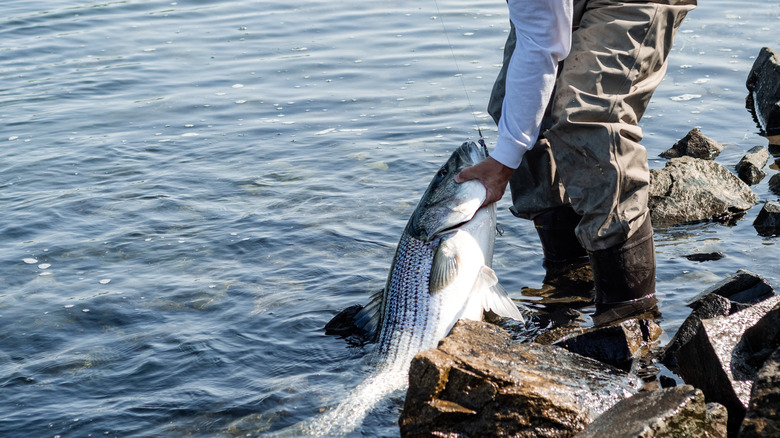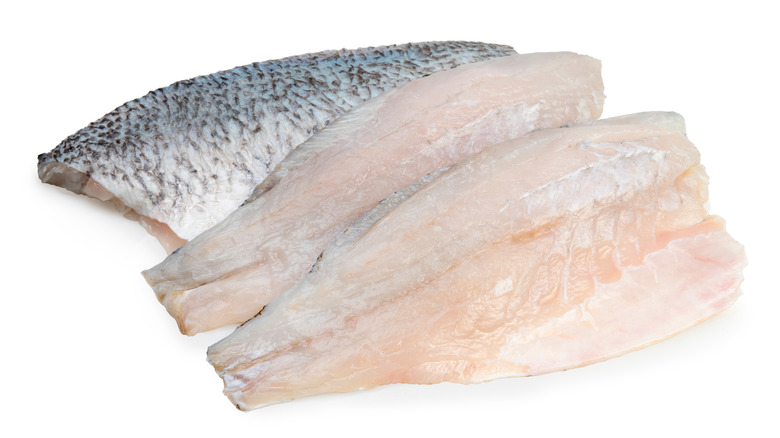The Real Difference Between Farmed And Wild Striped Bass
Eating fish can be good for you. The American Heart Association (AHA) recommends eating fish twice a week. It is a good source of protein and omega-3 fatty acids, an essential fat that can reduce the risk of a stroke or a heart attack. But are there certain fish that are better than others? Fatty fish, including the striped bass, are high in omega-3.
According to Gone Outdoors, striped bass are found along both coasts of the United States, are high in protein, low in calories, and contain natural, healthy fats. The fish is not only high in omega-3 fatty acids but also rich in vitamin B12 and selenium. Vitamin B12 is important for your nervous system and for making red blood cells, while selenium is important for your heart health and immune system (via Harvard T.H. Chan School of Public Health of Harvard University). If you're trying to add more fish to your diet, the striped bass might be a good option as it has a mild flavor and it's sturdy enough to make cooking on the grill easy.
In the wild vs on the farm
But what's the difference between wild and farmed striped bass? Per Saveur, farmed fish is a natural cross of white and striped bass. They were first documented in the 1930s when an ocean striper was added to a freshwater pond. Compared to their wild, oval-shaped counterparts with solid stripes, the farmed variety is rounder with broken stripes. They are fed a diet similar to those in the wild and are typically collected once they reach a pound and a half. Both wild and farmed fish can live in either saltwater or freshwater environments.
But is one better to eat than the other? Mercury levels can be a concern when choosing which fish to eat. The Environmental Defense Fund explains that farmed striped bass is low in mercury, but wild bass caught on the East Coast may have elevated levels. So if you're deciding which one to eat, it might be safer to stick with the fish that come from a farm.

